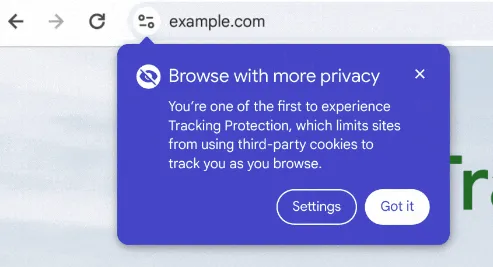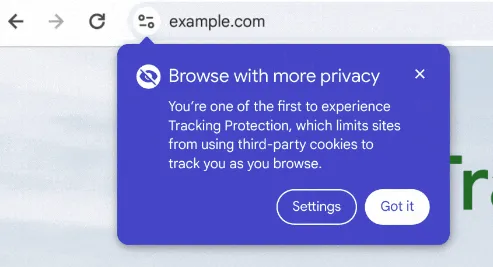In what may amount to the biggest head fake in digital advertising history, Google has now announced that it won’t be making any changes to cookie tracking in Chrome after all, abandoning the final elements of its years-long “Privacy Sandbox” transparency and privacy push.
Well, Privacy Sandbox as a project will continue, but it will only be a project, not a requirement. Which, for the most part, will make it a largely irrelevant option for ad partners looking to track data to improve campaign performance.
As per Google:
“As we’ve engaged with the ecosystem, including publishers, developers, regulators, and the ads industry, it remains clear that there are divergent perspectives on making changes that could impact the availability of third-party cookies […] Taking all of these factors into consideration, we’ve made the decision to maintain our current approach to offering users third-party cookie choice in Chrome, and will not be rolling out a new standalone prompt for third-party cookies. Users can continue to choose the best option for themselves in Chrome’s Privacy and Security Settings.”
That’ll be a relief to advertisers, who’ve been dreading significant impacts to their tracking processes, though privacy advocates will no doubt be less than happy with the decision.
To recap, back in 2020, Google announced its initial plan to phase out cookie tracking, initially by 2022, in order to better align with the broader industry shifts towards enhanced data privacy and control for web users. Google’s phase-out plan included the development of its new Federated Learning of Cohorts (FLoC) model, which would still enable a level of user activity tracking, though without the personal identifiers that could be tied to any specific user.
But its ad partners challenged the plan, and in 2021, Google announced that it was delaying the FLoC plan with a view to establishing a better solution that would address all requirements.
Google then switched focus to its Privacy Sandbox project, which would enable more data tracking alongside privacy protections. Google launched Privacy Sandbox for public use in September 2023, and by January 2024, it had a new plan in place to use the project as the alternative replacement for cookies, with the updated system set to categorize web users into topic categories, as opposed to facilitating individual tracking.
But after various concerns were again raised by various industry and regulatory bodies, Google delayed its cookie phase out plan once again, which eventually led to Google announcing in July last year that it was abandoning its phase out plan entirely, in favor of “a new experience in Chrome” that would enable people to make an informed choice about the data they share with websites and apps as they so choose.

And now, Google’s moving on from that element as well, the final remnant of its five-year privacy enhancement odyssey.
So now, businesses will be able to carry on using cookie tracking in Chrome as they have been, tracking visitor data as normal, which they can then use for ad targeting.
Which, given that Google had already abandoned its broader cookie phase-out is probably not a major shift, but it will offer relief to a broad range of advertisers and ad tech partners who’d been scrambling for alternative data solutions to help maintain ad relevance and performance.
Now, there’ll be no change, and no need for cookie tracking options. You can just keep on tracking data as you always have, and Google doesn’t have an alternative in sight to re-align its systems.
Thus ends an enduring, expensive narrative for many online advertisers.








Recent Comments